Editor’s Note: Guest contributor Andrew Hong is a data science student at Stanford University and lifelong Washingtonian from South Seattle. He has previously worked as a campaign consultant, community organizer, statewide coordinator of Redistricting Justice for Washington, and currently serves as a Research Data Analyst at the Washington Community Alliance Data Hub. Andrew can be reached at this email address with any inquiries. NPI is delighted to be able to share his timely and well researched electoral analysis in this guest post.
One of the biggest political shocks in 2020 was the Latino vote shifting to the Republican Party, with some counties in Texas’s Rio Grande Valley shifting toward Trump by as high as 50%. Washington’s Latinos largely bucked that trend in 2020. But in 2022, the Latino conservative wave reached the Evergreen State.
By analyzing data from the U.S. Census Bureau and Secretary of State’s 2022 election results by voting precinct, I’ve estimated the magnitude of the Latino Republican shift was well into double digits. I also modeled the degree to which this shift came from depressed Latino turnout or historically-Democratic Latino voters crossing party lines, which I will expand on further below.
Democrats and progressives should care deeply about the Latino vote. Latinos make up the state’s largest minority racial group, and are fast growing in Central Washington where they form majorities in multiple counties.
For example, in Yakima County, Latinos make up a majority (51%) of the population, up from 36% just twenty years prior. These communities have historically made up a key part of the Washington Democrats’ multiracial electoral coalition, and as they grow in size, they represent Democrats’ best opportunity to flip red districts to win legislative supermajorities in Olympia.
On the other hand, if this year’s trend continues, working class Latino voters — alongside working class Asian, Black, and Latino voters in King County — could deliver a reemergence of the Washington State Republican Party.
Electoral data analysis
The first and most obvious sign of worry for Democrats was in a local county commissioner race in Yakima. In 2021, a judge ruled that Yakima County violated the Washington Voting Rights Act by barring Latino voters’ legally protected ability to elect candidates of their choice.
This landmark decision led to the creation of three county commission districts — two of which are majority-Latino districts that Joe Biden won by double digits.
Yet in 2022, Democrats failed to win a single district.
In the overlapping, newly-drawn majority-Latino 15th legislative district, the Democratic candidate for state senate only received 32%, down a whopping 17% from Biden’s narrow victory in the district in 2020. While the 15th District will likely be redrawn by federal courts next year because it violates the Voting Rights Act by dividing minority populations and geographic communities of interest, the vast drop in Democratic support in this district spells trouble.
These trends extended to statewide races, although to a lesser degree.
For example, Democratic Senator Patty Murray earned just 1.2% less of the vote statewide in 2022 than Democratic Senator Maria Cantwell did in 2018.
But critically, in Latino-heavy Central Washington, Murray dropped 4.8% from Cantwell’s 2018 run. (Central Washington is defined here as Grant, Yakima, Adams, Franklin, and Benton counties — the center of the Latino community in Washington.) Cantwell in 2018 and Murray in 2022 share similar dynamics: popular incumbent Democratic senators running for re-election during a midterm year, each receiving a similar final statewide result. Thus, it’s a good pair of races to represent generic partisan changes over the past four years.
When digging deeper into the data, we find that much of the Republican gains came from majority-Latino precincts.
Some precincts in East Yakima, East Pasco, and the Yakima Lower Valley can reach up to 90%+ Latino, and these areas had Republican shifts as high as 35% between 2018 and 2022; this occurs even as majority-white precincts in West Yakima and Tri-Cities had actually Democratic gains.
Indeed, my data model of these two elections at a precinct level approximates a dramatic 17% drop in Democratic support among Central Washington Latino voters from 2018 to 2022, while only a 2–3% drop among white voters.
It seems that the political earthquake that began two years ago in the Rio Grande Valley has officially hit Washington, the Evergreen State.
Turnout versus shifting preferences
These profound changes raise further questions: is the Republican shift in Central Washington due to turnout (Latinos voting in smaller numbers) or voting choice (Latinos switching to the Republican Party), or both?
By returning to the Cantwell 2018-Murray 2022 comparison, we find turnout decreased in 2022 across Washington, but dropped more in Central Washington.
Here, my precinct-level analysis determined while white turnout dropped from 78% to 72%, the already lower Latino turnout plunged from 42% to 23% among Latinos — a staggering 19%. This means Latino voters went from being 16% of the Central Washington electorate in 2018 down to 10% in 2022.
While this turnout difference is significant, it was not big enough to account for all of the Republican gains. If we assume Latinos and whites voted for Democratic candidates at the exact same proportion as they did in 2018, the change in turnout in 2022 would only explain a 2.9% Republican gain.
But there was a 4.8% Republican gain, so that means a little less than half of the GOP shift was not from turnout changes, but from previously Democratic voters voting Republican in 2022.
We also know that the Republican gains in Central Washington were in mostly heavily-Latino communities like East Yakima, East Pasco, and the Yakima Lower Valley. So most of those Democratic-to-Republican voters were likely Latinos, not whites. So the answer to the question posed above is both: the Republican shift was because Latinos both voted less, and the ones that did vote voted more Republican altogether.
An important caveat, albeit wonky: because we do not have public data on voter registration rates by race/ethnicity, this analysis does not account for probable disparities between white and Latino voter registration rates.
Therefore, this analysis likely overestimates the overall share of the vote that is Latino, and therefore overestimates how much depressed Latino voter turnout explains the Republican shift. Put differently, this model likely underestimates the true magnitude of Latino voters switching parties to vote for Republicans.

Conclusion
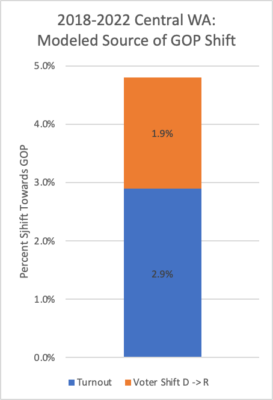
Washington Democrats declared the 2022 cycle a resounding victory, but a 17% decline in support within the fastest-growing minority group spells trouble for Democrats’ future. In ten years, Central Washington will see multiple majority-Latino legislative districts and a new majority-minority congressional district.
Democrats have an opportunity to challenge for another seat in the U.S. House of Representatives and achieve a legislative supermajority to submit state constitutional amendments to voters. But their lack of attention to the Latino sleeping political giant could pave way to Republican dominance in the region.
This lack of attention can be seen in that no Democratic candidates were recruited to run in a Biden+15 district for Yakima County Commission — a painful missed opportunity.
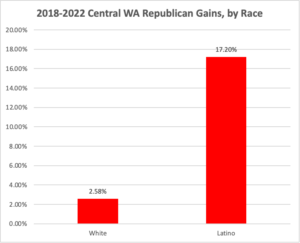
If the Democratic Party invests into candidate recruitment and fundraising, it can make up some of this ground. But a messenger without a strong message won’t deliver the votes. Polling by the Pew Research Center, among others, has shown Latinos generally prioritize economic issues over social issues.
Some political scientists and Democratic strategists, such as Ruy Teixeira, have argued — correctly, in my view — that Democrats have lost working class Latino voters by de-emphasizing economic issues for social issues in an effort to appeal to upper-class suburban voters. That’s come at the cost of working class voters of all races. In fact, Democrats also lost ground with working class Asian and Black communities last year in my home in South Seattle and South King County.
To buck this rightward trend, Washington Democrats need to embrace a clear, populist, economic-focused message — and deliver legislation — that speaks to working class voters of color. They also need to invest in candidate recruitment, campaigns, and organizers in these communities.
With the support of working class Latino voters, Democrats could win a historic statewide mandate in these next two decades.


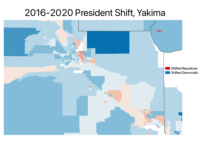
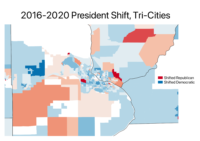
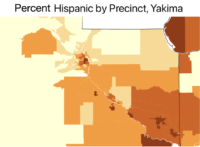
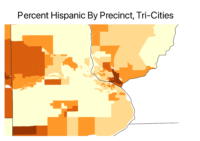
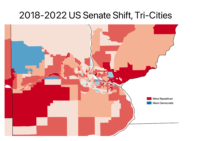
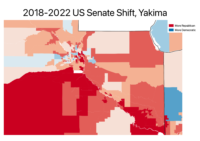
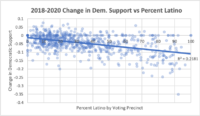
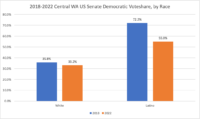
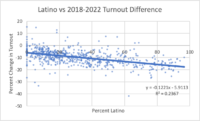
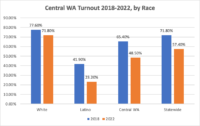
Comments are closed.